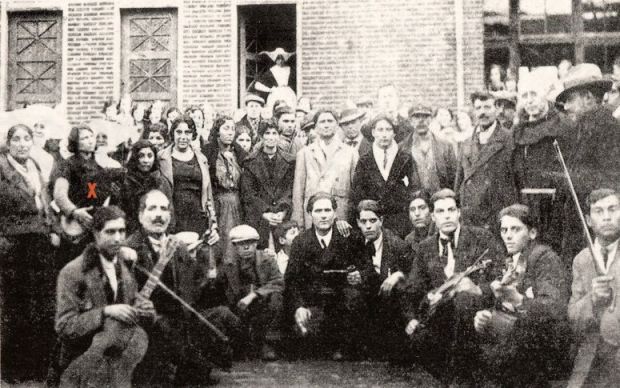
It is amazing and in a way disturbing but this girl was born literally minutes away from where I was born and yet I was not aware of her existence or had even heard of her until now.
1944
Just a few seconds… that’s how long this girl stared into the camera on 19 May 1944 in the doorway of this boxcar in Westerbork, unaware of her fate. The train was about to depart for the Auschwitz-Birkenau Extermination Camp in Poland. It is surmised that she was gassed there during the night of 2 August 1944. Her exact identity was unknown for decades, but as the ‘Girl with the Scarf’ she became a symbol of the persecution of the Jews.
Extensive research conducted by the Dutch journalist Aad Wagenaar revealed in 1995 that the girl was not Jewish but in fact Sinti. Her name was Anna Maria Steinbach. She was born on 23 December 1934 in the province of Limburg in the south of the Netherlands. Her parents gave her the Sinti name Settela.Around 245 Sinti and Roma were deported from the Netherlands to Auschwitz. Only 30 of them survived the war. Westerbork’s Camp Commander Albert Gemmeker ordered the Jewish prisoner Rudolf Breslauer to film daily life in the transit camp.

This still image, originally from that film, has been included in The Second World War in 100 Objects as a remembrance of this often overlooked group of Nazi victims.2.16 minutes into the film.
Setella was born in Buchten (now part of Sittard-Geleen, in southern Limburg,Netherlands) as the daughter of a trader and violinist. On May 16, 1944, a razzia against the Romanies was organized in the whole of the Netherlands. Steinbach was arrested in Eindhoven. That very same day, she arrived with another 577 people in Westerbork concentration camp. Two hundred seventy-nine people were allowed to leave again because although they lived in trailers they were not Romanies. In Westerbork, Steinbach’s head was shaved as a preventive measure against head lice. Like the other Sinti girls and women, she wore a torn sheet around her head to cover her bald head.
On May 19, Settela was put on a transport together with 244 other Romanies to Auschwitz-Birkenau on a train that also contained Jewish prisoners. Right before the doors were being closed, she apparently stared through the opening at a passing dog or the German soldiers. Rudolf Breslauer, a Jewish prisoner in Westerbork, who was shooting a movie on orders of the German camp commander,

filmed the image of Settela’s fearful glance staring out of the wagon. Crasa Wagner was in the same wagon and heard Settela’s mother call her name and warn her to pull her head out of the opening. Wagner survived Auschwitz and was able to identify Settela in 1994.
On May 22, Setella Steinbach, arrived in Auschwitz-Birkenau. She were registered and taken to the Romani section. Those who were fit to work were taken to ammunition factories in Germany. The remaining three thousand were gassed in the period from July to August 3. Steinbach, her mother, two brothers, two sisters, aunt, two nephews and niece were part of this latter group. Of the Steinbach family, only the father survived; he died in 1946 and is buried in a cemetery in Maastricht.

After the war, the fragment of seven seconds in Breslauer’s movie was used in many documentaries. The image of the anonymous young girl staring out of the wagon full of fear and about to be transported to Auschwitz became an icon of the Holocaust.


Donation
I am passionate about my site and I know you all like reading my blogs. I have been doing this at no cost and will continue to do so. All I ask is for a voluntary donation of $2, however if you are not in a position to do so I can fully understand, maybe next time then. Thank you. To donate click on the credit/debit card icon of the card you will use. If you want to donate more then $2 just add a higher number in the box left from the PayPal link. Many thanks.
$2.00
Reblogged this on History of Sorts.
LikeLike